This week we took the family to Paris for half term. It isn’t quite Spring, but the sun shone and much inspiration was gained from just walking the streets and discovering hidden corners of Paris.
Hidden Corners of Paris.
19 February 2016
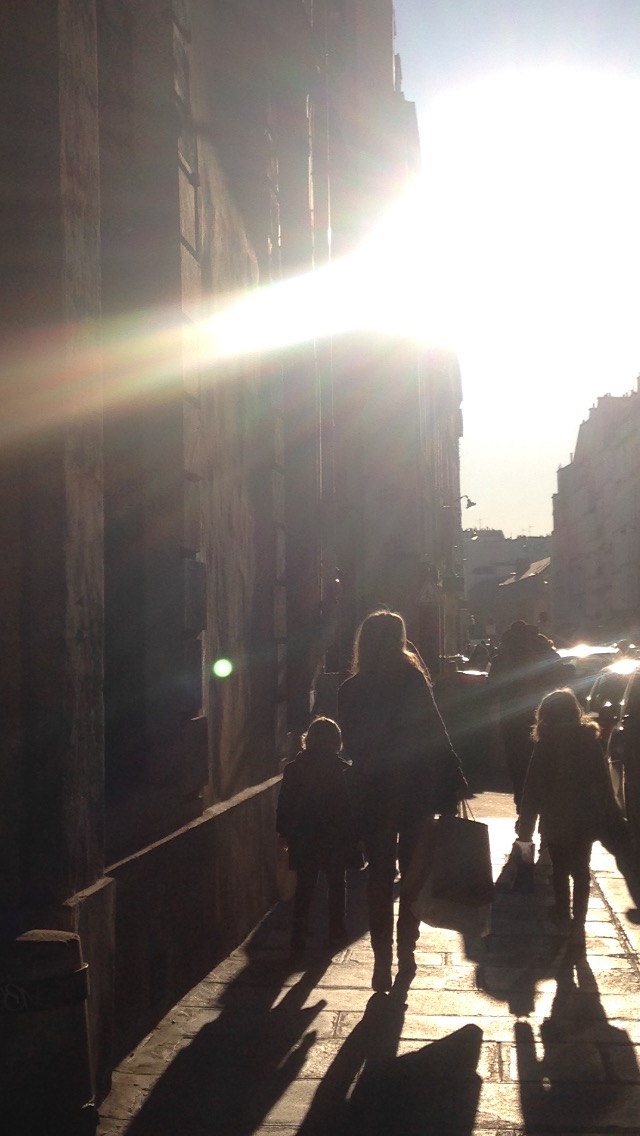
Our first stop after dropping our bags at the hotel in Saint Germain, was the Pompidou centre. We ascended in transparent escalators to the top floor to delight in the panoramic views of Paris and eat a wonderful lunch at Le Georges restaurant. The children entertained themselves by playing hide and seek in the intricate and modern interiors designed by Jakob & Marfarlane architects.
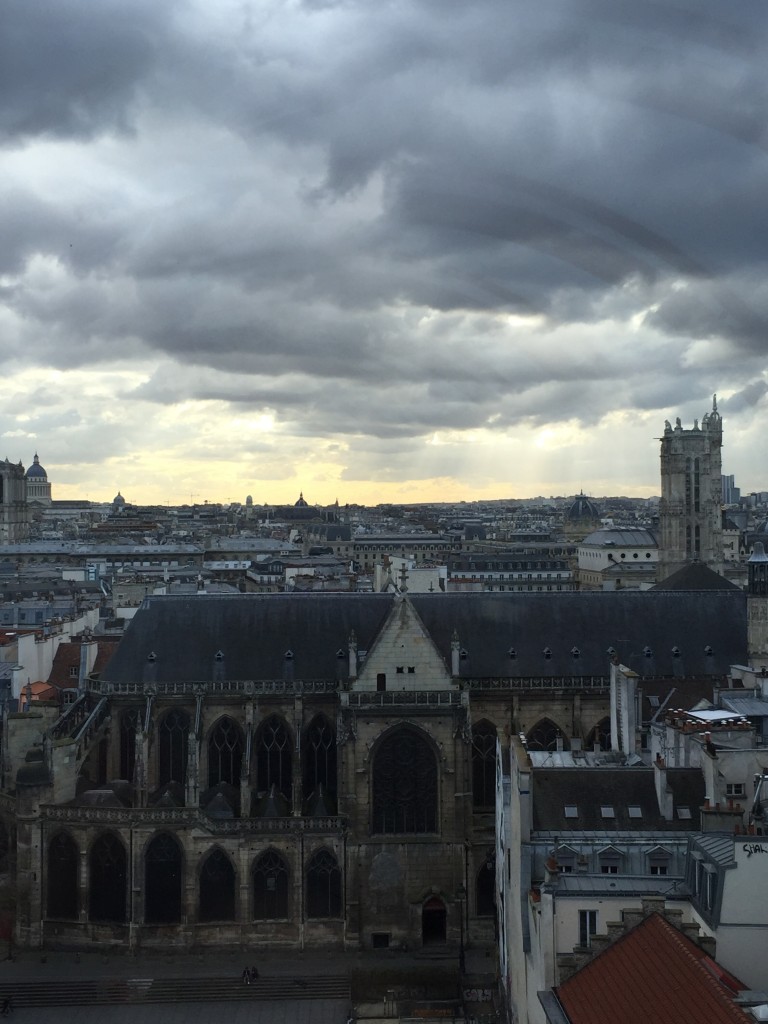
The many churches and Domes seen from the top of the Pompidou.
From the roof terrace you look out on the many churches and domes of Paris, including the dome of the Pantheon in the distance. An early and very fine example of Neoclassicist architecture that was commissioned by Louis XV as a symbol of his thanks to God for giving him renewed health. It was built by the architect Soufflot who unfortunately didn’t live to see the completion. Following the French Revolution, it was used as a mausoleum to bury outstanding Frenchmen who sacrificed their lives for the cause. The tradition continued and is the resting place for many including Voltaire, Victor Hugo, Rousseau and Marie Curie.
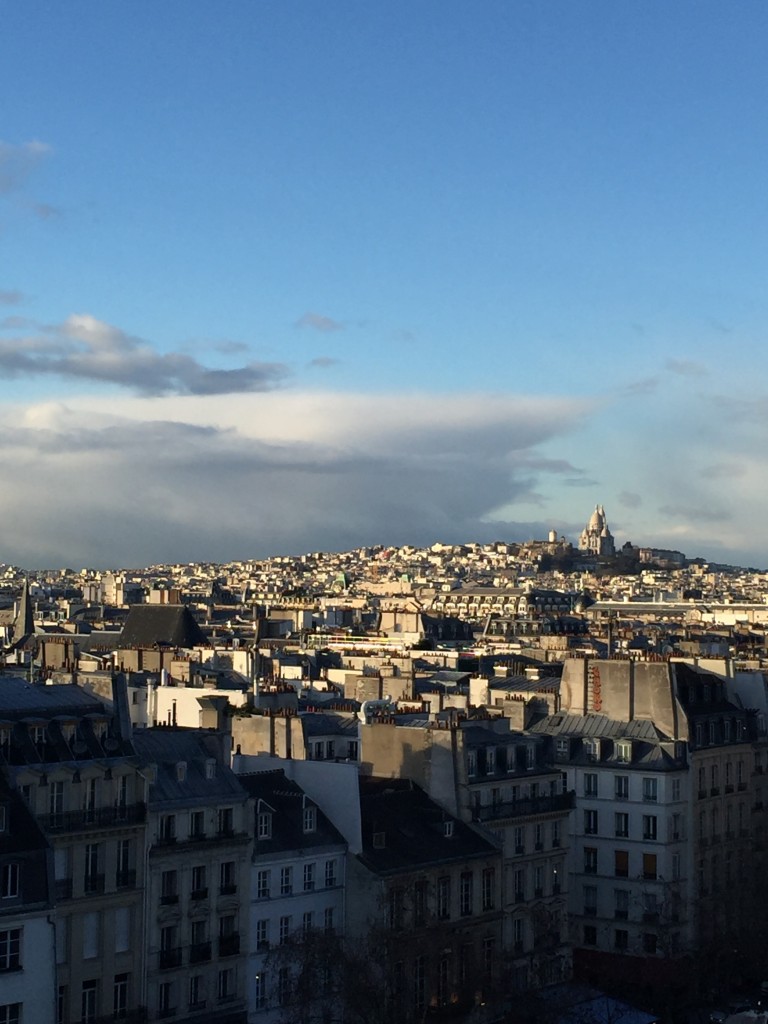
Sacre Coeur rises above the rest of Paris.
We didn’t make it to Sacre Coeur this time but there it was in full view, built on the highest point of the city, with the exterior travertine stone caught in the sunlight.
The Museum of Modern Art within the Pompidou Centre is the largest museum of Modern art in Europe and the collection is totally mind blowing. It is always such a joy to spend time in a room full of Francis Bacon paintings (even with your children climbing all over you.) Bacon’s triptych of his lover George Dyer, ‘Three Figures in a Room’ is one of my favourites.You could spend days here. We managed a couple of hours after which the children were starting to tire and couldn’t be convinced of the beauty in one of Charlotte’s favourite paintings by Rothko.
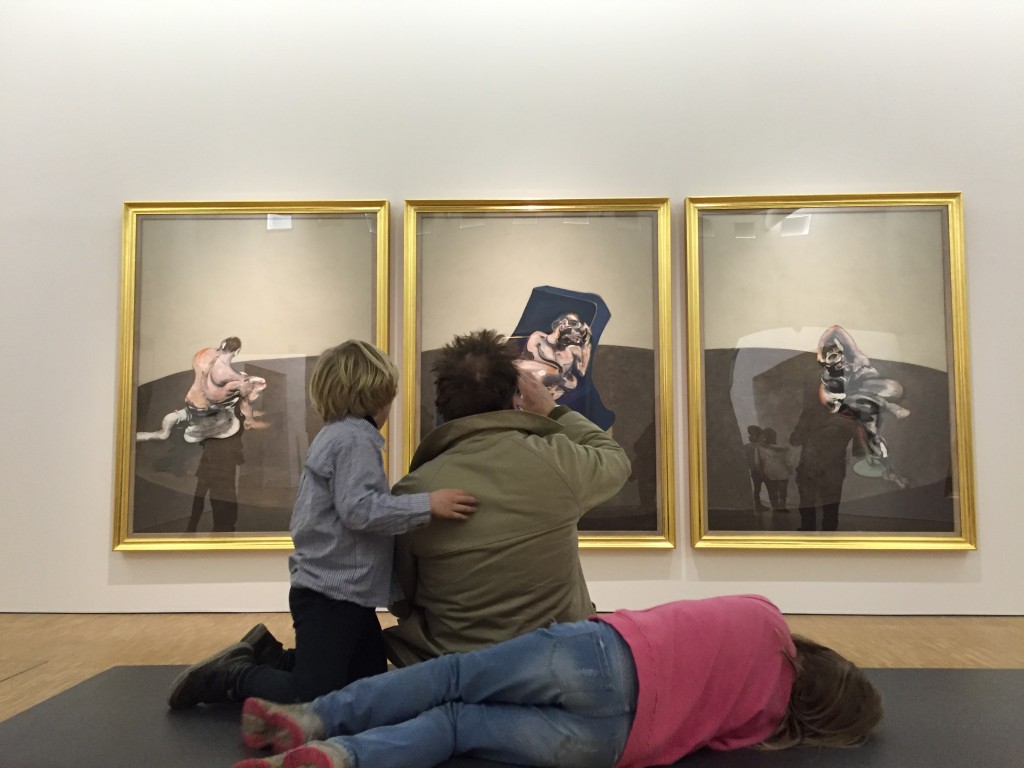
The seventeenth century ‘L’Hôtel Salé’ is one of the finest historical buildings in the Marais and was built for Pierre Aubert, a tax farmer who became rich collecting the salt tax.
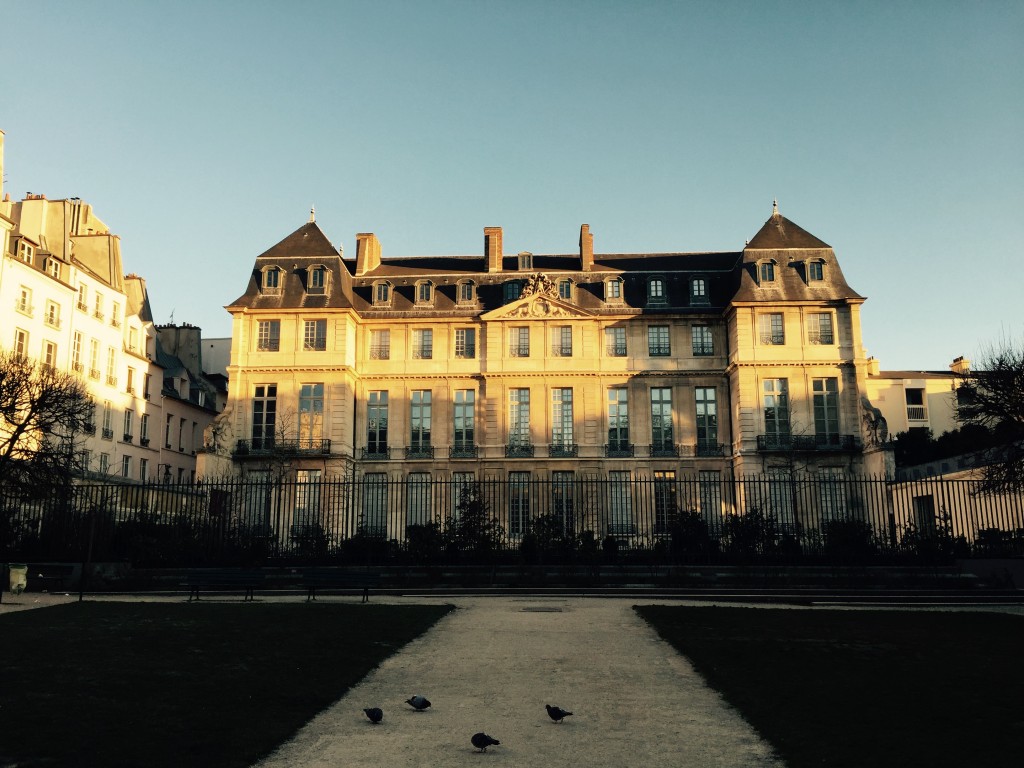
One side of the magnificent seventeenth century building.
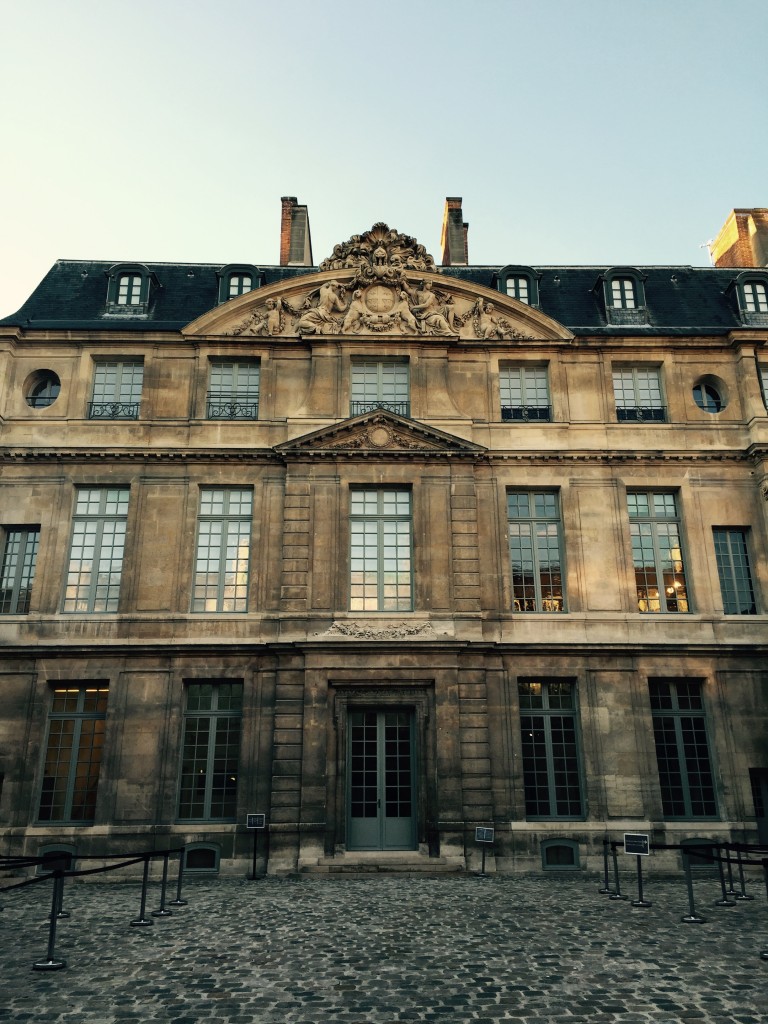
The majestic front of the L’Hôtel Salé.
It now houses the magnificent Picasso Museum. The front of the L’Hôtel Salé with the classical pediment in full glory displays the richness of the baroque sculpture with acanthus, fruit and flower motifs.
Into the Place Voges we wandered finding inspiration through arches, behind closed doors.
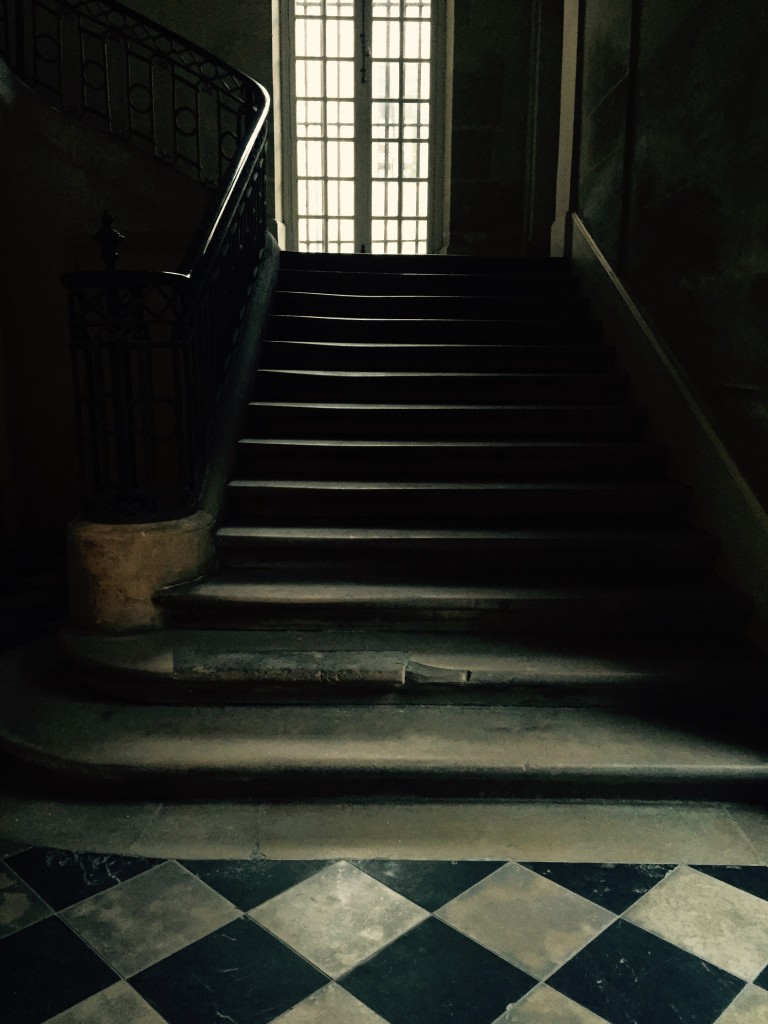
Two days felt longer, with the ease of the train bringing you from and to the hearts of the cities (even with scrambled moments of trying to find printed boarding passes!)
Back in the showroom, new additions I have bought arrived – nineteenth century Grand Tour miniature models.
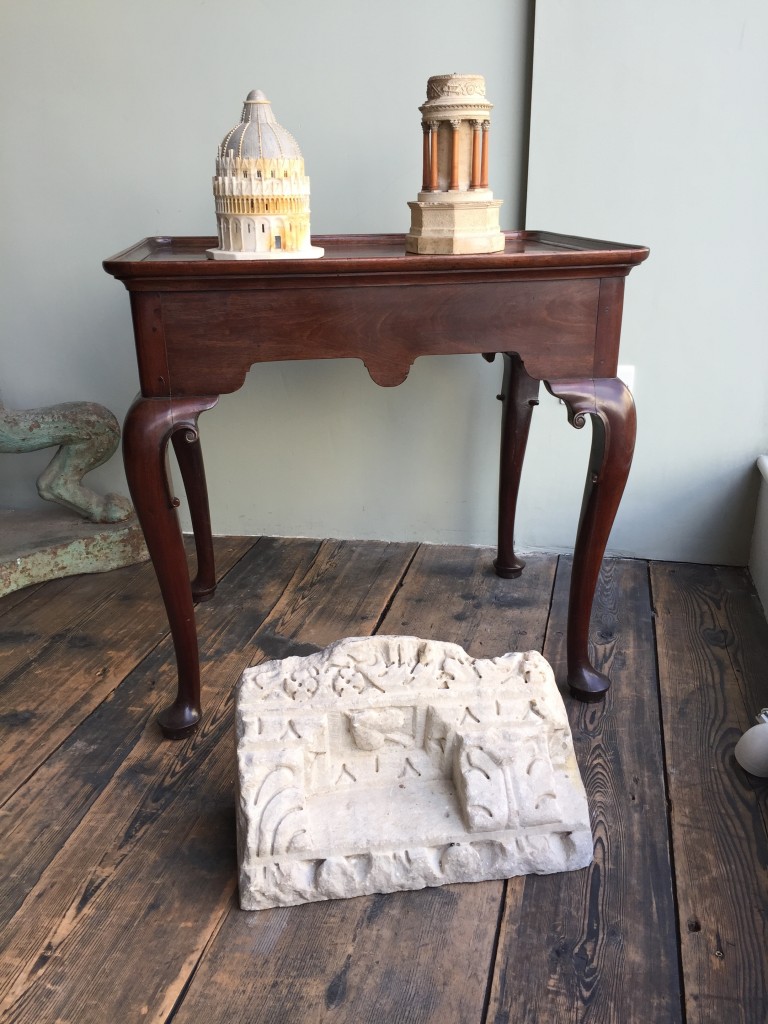
New additions to the Showroom: Miniature Grand Tour Models with a Roman fragment.
An alabaster and slate model of the Baptistry at Pisa reminded me of the view from the top of the Pompidou and all the domes that arch above the Parisian roof tops. The richness and intricacy of the carving combined with the stone and wood model of the Temple of Vesta, seemed to reflect all the beauty that I had seen and felt.



